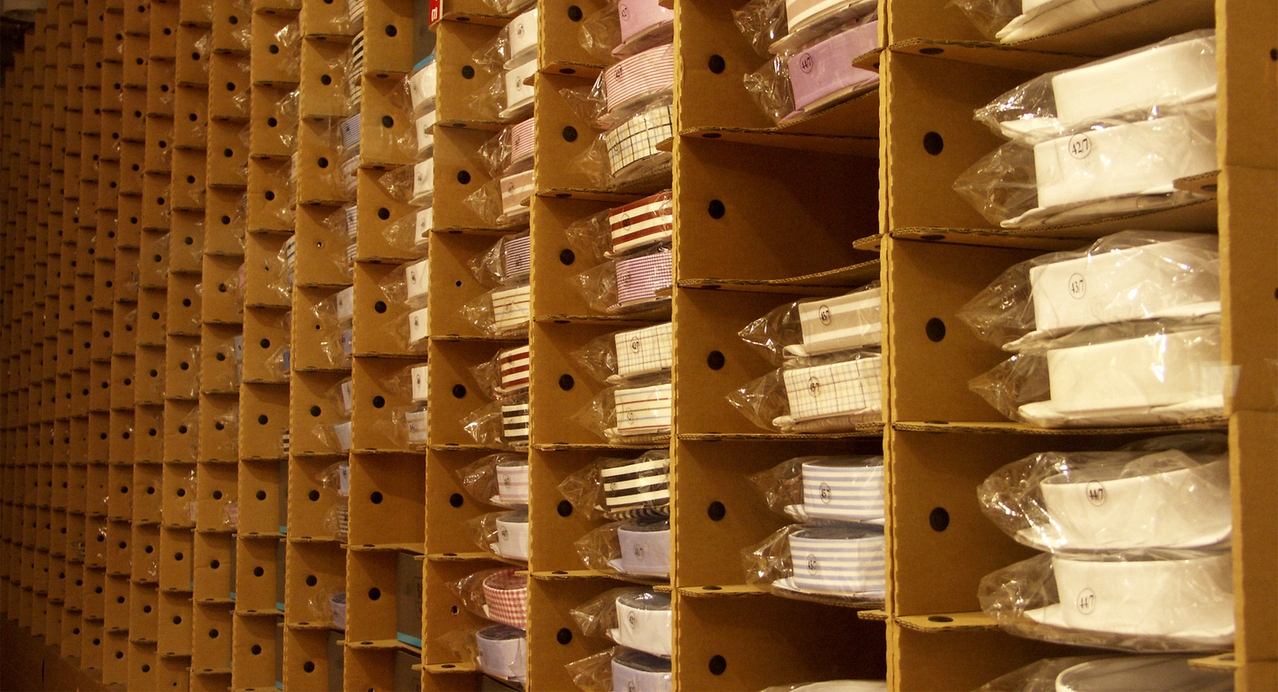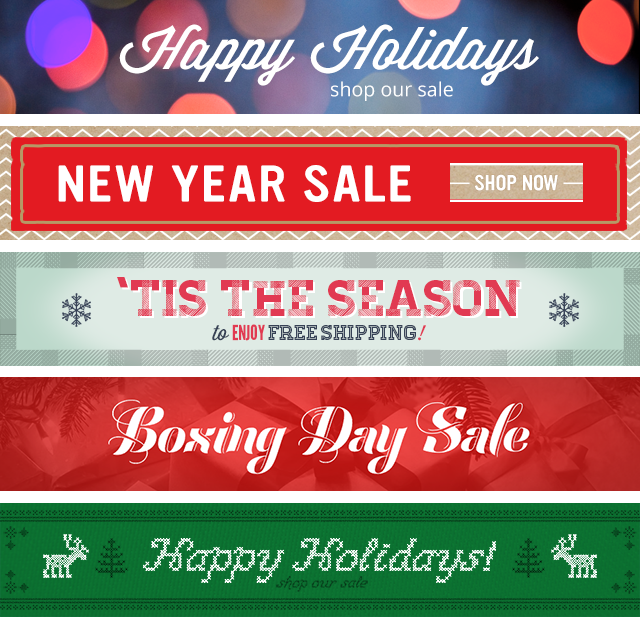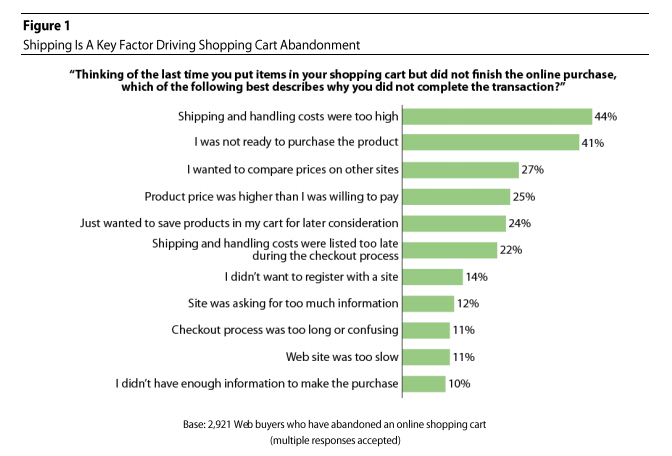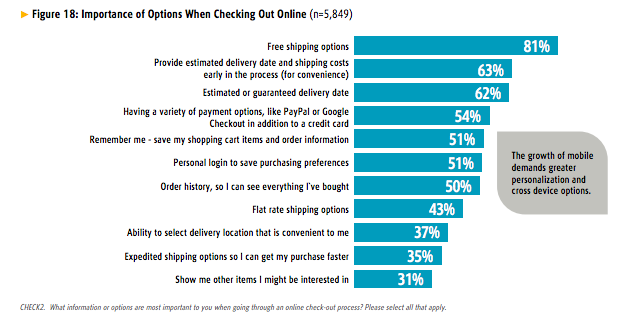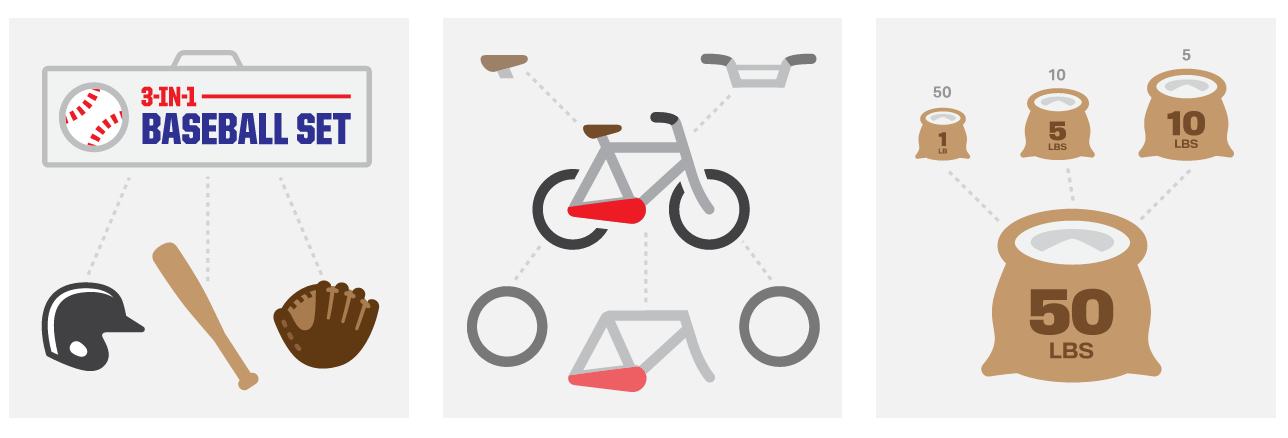The title may sound brutal, but excess inventory is no trivial matter, as any retailer experiences eventually. Whether or not it’s worse than a stockout is debatable, but one thing is for sure: inventory that isn’t sold is cash that’s tied up.
Inventory is most likely your biggest investment. The longer you hold onto it, the more it’ll cost you. That unsold product means less cash flow, less money to purchase more inventory, and — whether you’re storing it in a rented warehouse or in the warehouse of a 3PL (third-party logistic provider) — you’ll be paying even more for it because it isn’t moving.
But, as many retailers know, there are plenty of ways to get rid of it.
Refresh Your Product Marketing
A little marketing magic can go a long way. Like the Princess Diaries, take that Mia of a product, touch it up, and present it in a different light — one that gets it selling. Makeup, some tweezers, and a hair-do won’t do the job here, though. Instead, you’ll be relying on spruced up product photos, better-branded copy, and a design tweaks.
Product Photography
Customers buying online don’t have access to the first-hand experience a brick and mortar offers. They can’t tinker with the product in person and see it in action, making online purchases a little more risky. That’s what makes product photography so important.
An unclear, unprofessional product image does nothing to persuade customers to trust you enough to purchase. Images must accurately and effectively illustrate the product.
Perhaps that product is a slow-seller because the camera added 10 pounds. Refresh its (and other products, if they look not-so-hot) image. High-quality photos can cost a fair buck, but Bigcommerce has a solid guide on producing sleek product images on a budget.
Copy
Sometimes we take words for granted. There’s a lot of them out there, they’re replaceable, it’s easier to look at visuals, etc. But there’s no denying that even the smallest tweaks to copy, whether it’s on your marketing materials or product descriptions, can impact conversions. Evidence: check out these 15 cases provided by HubSpot where word choice mattered.
Those lagging products may just need a little worded magic. Spruce up the product copy to make it more branded or clearer on its benefits. Do be careful, though; if you overhype the product with the copy, you’re setting yourself up for a disappointed customer and a return. Don’t over-promise!
Position and Design
Your ugly duckling of a product might just be lost and forgotten amongst your other products. Bring it to the limelight — slap a “best seller” label on it (even if that’s not exactly the case), bring it to the “hot” product category section, or slap on a heavy discount and plaster it on a banner or pop up to pique the consumer’s interest. At the end of the day, it may just be an uninteresting product, but it could very well be getting lost in the mix.
Pump up the Promotions
There’s a reason for those non-stop commercials shouting about sales. In some cases, they just want to make a buck, but a good chunk of them are trying to get rid of excess inventory. Implementing a sale to do so just makes sense; it’s a psychological fact that us humans hate missing out on a limited opportunity. Use it to your advantage, and get the dust flying off that excess inventory with these promotional tactics.
Note that all of these promotions rely on discounts, and it’s up to you to determine a number that’s affordable for you. And if you want peak performance, definitely get the word out about each sale by utilizing your email marketing and social media. The more exposure, the better.
Clearance Sale
The most direct promotion, a clearance sale straight up tells the customer that you’ve got inventory that must go, even at the expense of heavy discounts.
You can roll these out whenever you need to, and popular times usually depend on when the demand for a product begins dropping. For instance, if you’re selling sweaters, the end of winter (January and February) is an opportune time to get rid of slow-selling inventory; the chance of selling it will drop for every degree the temperature rises. Selling grills and poolside accessories? September would be a good fit because cooler weather and cooler demand approaches. Got a diverse range of products? Consider holding clearance sales year round, shuffling products in and out as their demands change.
Flash Sale
No promotion makes the psychological fear of missing out as clear as a flash sale. If the name isn’t self-explanatory, a flash sale is a sudden, limited-time sale. It’s a perfect opportunity to put the consumer’s feet to the fire and motivate them to buy, all while getting rid of excess inventory.
Another perk to flash sales is the fact that they reward your most loyal of followers: those that are engaged with your brand. If they’re following you on social media, or opening your emails, they’ll get word of the sale, and the sale’s time restriction and discount will encourage them to gobble up the stock you’re trying to rid yourself of.
Seasonal Sales
Seasons are prime excuses for a sale. The holiday season is a no-brainer. Customers are already sniffing out holiday deals, and while you may want to focus on those high-selling, high-margin products, keep those laggards in mind as well. Consider bundling (which we’ll get to later) the two together at a discount, or tack on a heavier discount to the products that already have excess stock coming into the holidays.
And the holiday season isn’t the only opportunity. Every single quarter contains a holiday; there’s an excuse for a sale nearly every 30 days, whether it’s New Years, Valentine’s, spring break, Memorial Day, and so on.
Individual Discounts
Instead of relying on times to sell, it might be easier to just launch a promo for excess inventory when the need arises. Tired of seeing spiders slowly build cobwebs on some of your inventory? Forget about seasonal excuses — simply create a one-off promotion that discounts a product with excess stock.
Sell via Shipping
That S-word is extremely influential in getting a consumer to buy. Ever since ecommerce’s early beginnings, shipping has been a make-or-break factor for conversions. As far back in the stone ages as UPS’ shipping study in 2009, consumers found shipping and handling costs hugely influential in getting them to click the buy button:
Fast forward half a decade and the situation isn’t all that different. Another UPS study found that shipping remains just as influential in motivating a consumer to buy:
It’s perfectly possible to use the power of shipping to get rid of inventory. There are a couple great ways to do this: free shipping and fixed shipping rates on those items struggling to get out the door.
Fixed Shipping Rates
By offering free shipping, a merchant is obviously absorbing the entire cost, which sometimes isn’t affordable in terms of margins. You may desperately want that inventory out of storage, but suffering a loss isn’t an option.
Fixed shipping rates are a possibility here. Take the cost of shipping those dud products and work out a rate that’s discounted for the consumer, but affordable on your end. Then explicitly market those products with discounted shipping rates — implement a pop up, banner, or emboldened text in the product descriptions to make the benefit clear.
Free Shipping
Attach free shipping to any of the products that you’re failing to sell. The power of the word free is powerful enough; add shipping to it and 93% of consumers are more inclined to buy. Just let Amazon Prime do the talking.
It’s pretty simple — identify those dust-collectors, and, in the same ways mentioned earlier, market the fact that they have free shipping attached to them.
Setting an order value that acts like a gateway to free shipping access is also fair game. Called thresholds, a merchant can designate that an order value of $XYZ qualifies for free shipping. Check out this great how-to by Kissmetrics for determining a threshold that’s affordable.
But let’s stay on topic — how do thresholds tie into those dust-collecting products? The goal of a threshold is to get average order values up by enticing consumers with free shipping. A solid way of encouraging them to reach that bar all while getting rid of stagnant stock is by bundling products.
Begin Bundling
Bundling orders, sometimes referred to as kitting orders, is the process of grouping multiple, related products for sale as a single unit. Kitting orders into bundles has a ton of advantages: it’s easier to track inventory in bulk products like coffee or seeds, it boosts average order value, and, most important in this case, it can get slow-selling inventory off the shelf.
Essentially, you can bundle those slow-selling products in a few ways that make them more attractive, whether it’s because of the products they’re bundled with or the discount on each.
Bundle Laggards With High-Performers
Sometimes it’s best to just let the shininess of your top-selling products rub off on those duds. Take those slow-selling products and bundle them with more appealing products to hopefully get them off the shelf. To some consumers, it’ll look like a bargain; they’re getting that highly-desirable product at slightly higher cost, but another product as well.
Complimentary Products
To take it a step further, that high-low product bundle looks even more attractive if the products are complimentary. For instance, let’s say you’re selling Barbie products for who-knows-what reason. The kids love GI Joe Barbie; it sells rapidly. But those kids’ parents tend to avoid buying the Barbie Ballistics Missile Launcher, making it a slow-seller. Bundle the two together and tack on a slight discount to create an irresistible deal that gets those Missile Launchers flying.
Multiple Units of the Same Product
The phrase “two for the price of one” comes to mind here. To slice away at the stock of a certain product, consider creating discounted bundles of it in various quantities. It doesn’t need to be as extreme as “two for the price of one,” but the discount needs to be enough to get customers thinking they’re getting a deal or they’re losing out if they ignore the bundle. Every bundle sold means more units off the shelf, making it particularly effective for products with high excess inventory.

